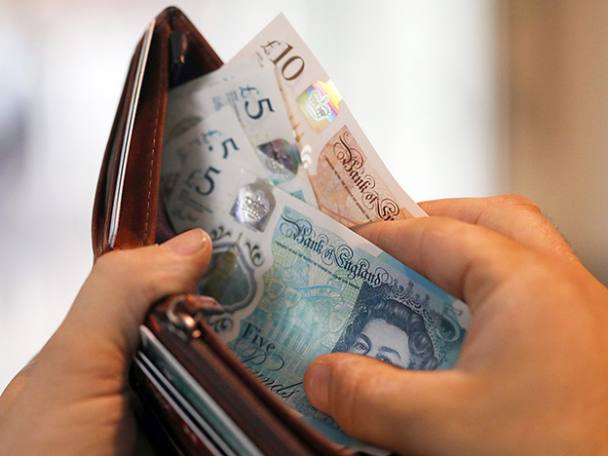Wage inflation is rising. Next week’s figures could show that wages excluding bonuses have risen by 3 per cent in the last year, the fastest growth for three years. Should investors worry about this?
In one sense, no. Because productivity growth has risen recently, wage rises are being largely offset by efficiency gains. That means they are not inflationary.
There is, however, another danger; wage rises might squeeze profit margins.
To see how, consider the circular flow of income. Obviously, if wages rise then so to do company costs and this, in itself, tends to depress profits. If, however, pay rises are returned to employers in the form of higher consumer spending the damage is reversed. What employers lose at the back door in higher wages, they get back through the front door in the form of more spending.
Of course, some employers won’t see that rising demand, but others will. The net effect on profits is zero. In fact, it might even be positive. If the wages are paid out of revenues that companies would otherwise merely have saved, aggregate demand (the sum of investment and consumer spending) would actually increase, and so therefore would profits. This is the thinking behind the theory of wage-led growth.
Here, though, lies a problem. Workers will not return higher pay to employers. For one thing, they’ll have to pay higher tax and will lose tax credits. It’s only if fiscal policy is relaxed that aggregate demand will hold up as wages rise. What’s more, with the household savings ratio recently at its lowest level since the late 1950s, workers might use higher wages to pay down debt or reduce borrowing. Already, there are signs of this: latest Bank of England data show that the annual growth of consumer credit has fallen to a three-year low.
We can formalise all this by a simple manipulation of national accounts identities. GDP is equal to the sum of consumer spending (C), investment (I), government spending (G) and net exports (NX). It’s also equal to wages (W), plus profits (P), plus taxes on production (T), plus other incomes such as rent and those of the self-employed (O). Rearranging these gives us the counterparts of profits:
P = (C – W) + (I – O) + (G – T) + NX.
My table applies this identity to the share of profits in GDP at three different dates: the latest peak in the share in 2009; a low point five years ago; and the latest date. (In truth, the UK profit share – like the wage share – has been remarkably stable since the early 2000s.)
| Counterparts to the profit share | |||||
| Total | C -W | I -O | G - T | NX | |
| 2009Q1 | 23.2 | 15.6 | -2.6 | 12.0 | -1.9 |
| 2013Q2 | 20.8 | 14.8 | -0.4 | 7.6 | -1.2 |
| 2018Q2 | 21.4 | 16.7 | 0.0 | 5.9 | -1.2 |
| Source: ONS and IC calculations | |||||
This shows that (C-W) has been the largest counterpart to the share of profits in GDP; this has been the case since the late 1980s. This reflects the fact that lots of non-workers, such as pensioners, spend money. More significantly for my purposes, (C-W) has added to the profit share in recent years. This is partly because pensioners’ incomes have risen and partly because the savings ratio has fallen. (I – O) has also made a positive contribution as capital spending has recovered from its cyclical low. But (G – T) has subtracted from profits as government borrowing has fallen.
This poses the question: if (C – W) falls as wages rise, which of these components might rise to offset the adverse effect on the profit share?
Yes, NX will rise to the extent that workers spend less on imports (relative to wages) as well as on domestic goods and services. But it’s unlikely that NX will rise very much given the depressing effects on world trade of Brexit, the trade war and the many structural factors holding down trade growth. Nor can we look to (I – O) for a big lift. This isn’t just because Brexit uncertainty will weigh down capital spending. It’s because this element hasn’t made a large contribution to the profit rate since the late 1980s, in part because other incomes such as rent have risen thereby tending to squeeze profits.
Nor is there much hope of a big contribution from (G – T), despite Theresa May’s promise last week to end austerity. This element tends to act as an automatic stabiliser for the profit share. It supports profits in bad times, such as the mid-1970s and 2008-09, but recedes in better ones.
The conclusion here is a little worrying for investors. It’s possible that a pick-up in wage growth will tend to squeeze profits. Although the share of profits in GDP has been stable for years, we have no guarantee at all that this will remain the case.









